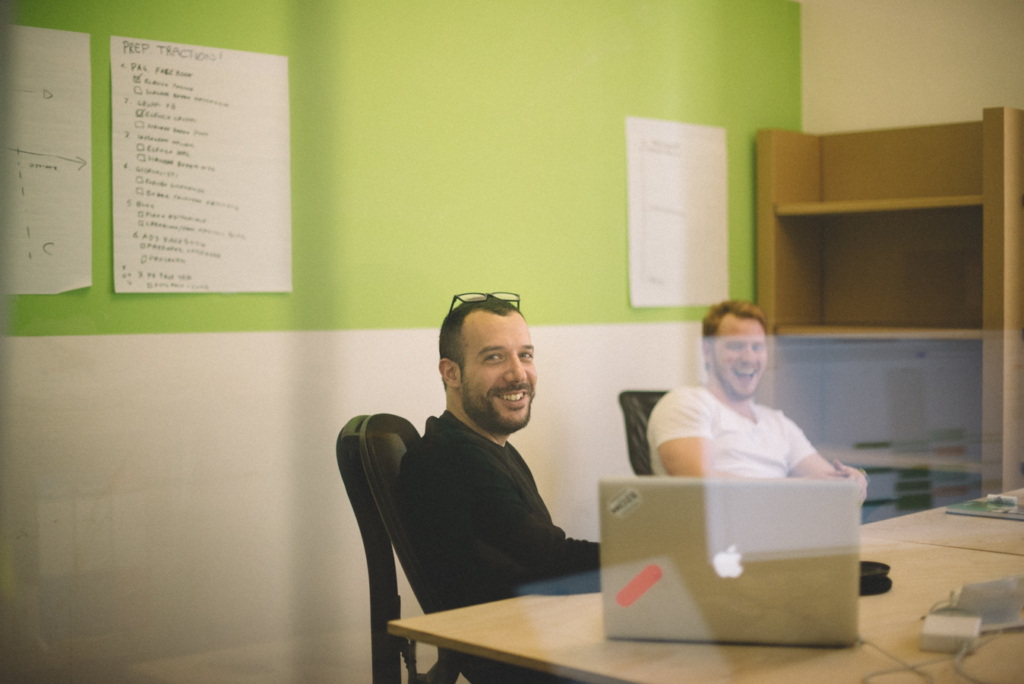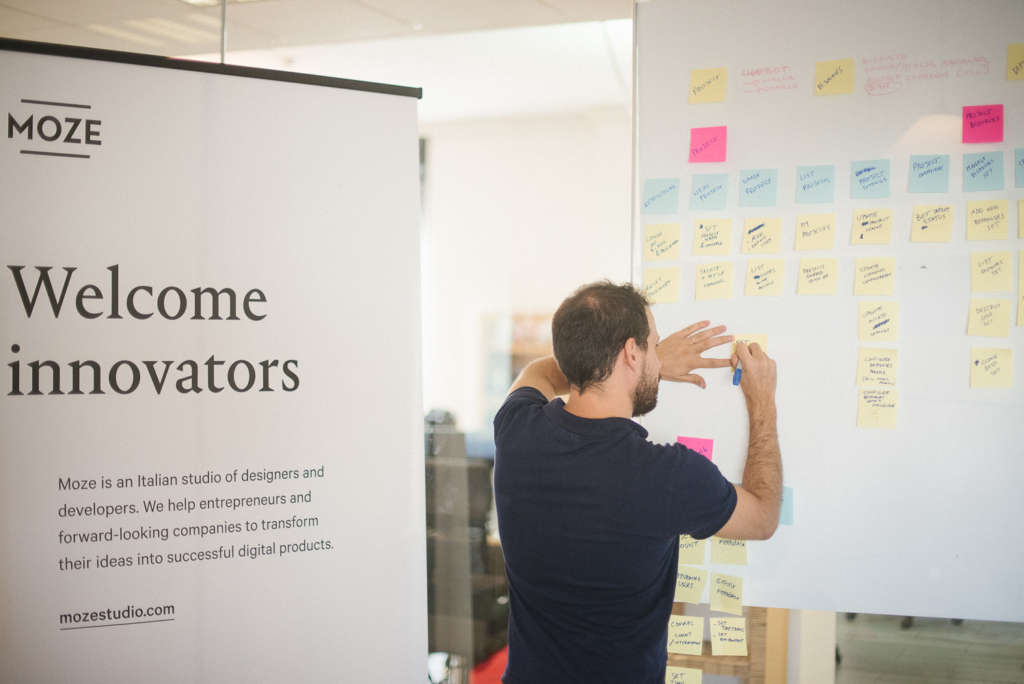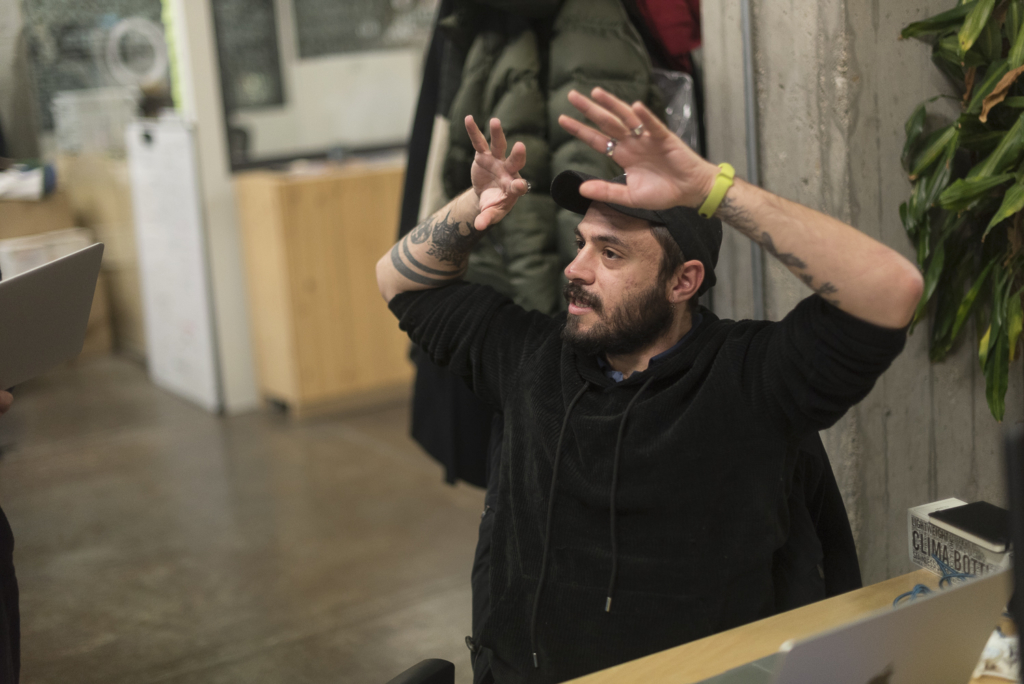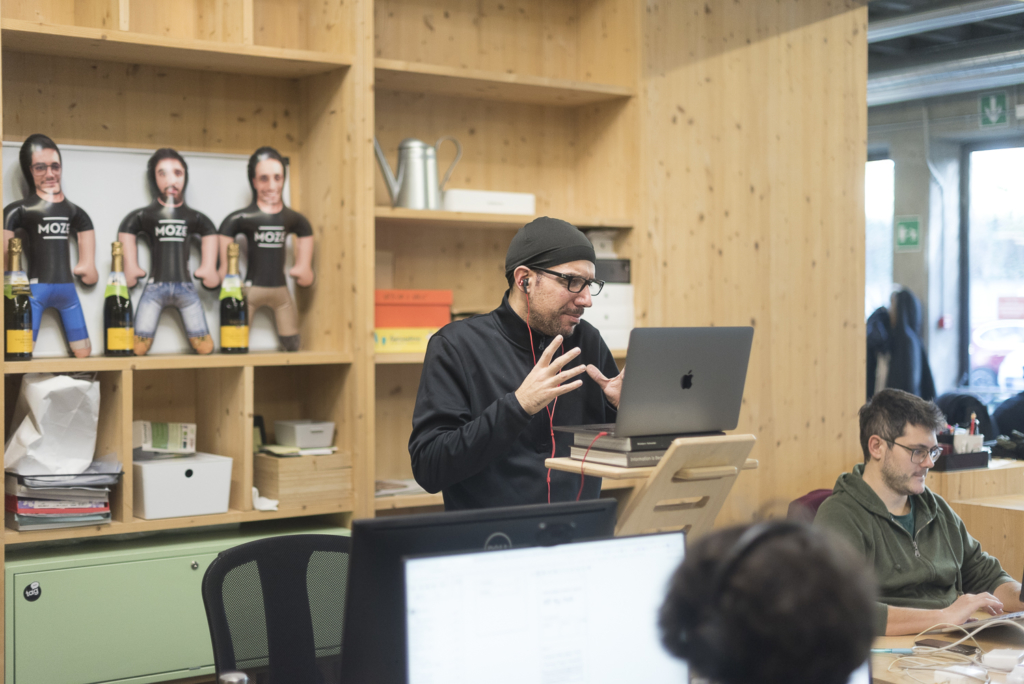Designers and developers: three principles to foster great teamwork
Design and development go hand in hand. If we want projects to be successful, we must find ways to align people from different backgrounds.
“You know what I miss about Moze?”
“What?”
“The way designer and developer interacted. The one in the other companies I worked in I no longer found.”
This exchange is taken from a conversation with a friend and colleague who, years ago, chose to leave our team and move abroad.
The collaboration process between designers and developers is something we have worked on a lot. Working on custom digital products, where user experience and layouts are designed each time according to specific needs (and not from existing ‘templates’), we necessarily needed what we implemented to be the same as (indeed, better than) the original layouts.

All this led me to reflect on the importance of those good practices that we sometimes take for granted:
- What are those conditions that enable designers and developers to work well together?
- How can you tell if you are on the right track?
- What are the warning signs?
In this article, we describe three simple principles we have adopted in Moze. It goes without saying that we do not pretend to be perfect: sometimes, designers and developers have to make “one more call” to get to know each other better. Nevertheless, collaboration works.
In order to describe the principles that guide the relationship between designers and developers in Moze, I tried to go beyond my own version of the facts: I asked some of the designers and developers in our team for help to describe as accurate a picture as possible. In particular, I was helped by Matteo, my partner and Design Director, and by the developers Claudio, Andrea and Gabriele.
Let us look at these principles together.
1. Working together. From kick-off to release.
The first fundamental aspect concerns the frequency and the way in which designers and developers have the opportunity to work together.
Claudio says: “From my past experiences, I have observed two extremes: in small companies, designers and developers are the same person, or perhaps they are desk neighbours. In large companies, on the other hand, design and development teams are, all too often, worlds apart. They communicate little or not at all, perhaps because their work schedules see them working at different times.
At Moze, despite being a small team with less than fifteen people, the situation is radically different: projects are organised in such a way that a certain level of collaboration and two-way dialogue between design and development is always maintained.
The design team is confronted with the development team to assess, beforehand, the technical feasibility and operational impact of the solutions being developed. During the project, if something has slipped through the initial assessments, they continue to collaborate effectively to find a solution that is satisfactory to all. The design team then always carries out quality control sessions, reporting any feedback to the development team.”

Gabriele says: “At Moze, it is never too long before you receive feedback on your work. Here, the process of creating digital products is really iterative: feedback follows each other in the different design and development phases. And this is good because without comparison, a developer can waste hours searching for the technically perfect solution, only to realise that the problem could have been circumvented in a much simpler way. It is always much better to get lots of frequent feedback, rather than one big review at the end of the job.”
Concerning the ways of collaboration, the right questions to ask are the following:
- Do designers and developers have frequent opportunities for confrontation?
- Do they have the perception that constructive feedback is welcome and that it has a real impact on the fate of the project?
- Are developers involved in preliminary evaluations before starting a new project?
- Do designers constantly review what the developers have done?
2. Designer a little bit developer. Developer a little bit designer.
The consequence of frequent collaboration is the transformation of the professional culture of the team: the contamination of skills and ideas is welcome, as it can accelerate the creative and implementation process.
A good designer designs a software interface knowing the implications of his work on the development activity. A good developer turns a layout into code knowing the basics of user experience. This allows a multidisciplinary team to conceive development as a whole, going from a business idea to the release of a working digital product in even a few weeks.

Gabriele says: “Developers and designers have more in common than you might think. It is precisely the knowledge of each other’s work that makes it easier to define a common approach, regardless of whether at any given moment you are using Figma or a code editor. In Moze, we have a lot of moments of confrontation, with people from heterogeneous working groups. Those are the right occasions to get to know what is happening outside our conceptual boundaries. In this way we discover that designers and developers are not so far apart.”
Andrea says: “Frequent feedback during the development of a project enriches both designers and developers. A developer will learn to see a website through the eyes of the people who will use it, striving not only to write quality code, but also to ensure the best possible user experience. The designer, on the other hand, will become familiar with the difficulties encountered by developers in implementation, learning to simplify and anticipate problems in the future.”
3. Team stability
One aspect not to be neglected is the relationship between people who know each other well and have learnt to work together over the years.
Gabriele says: ‘A key aspect concerns the continuity of relationships. Making a digital product is a team effort: the closer the team is, the more they are used to working together, the better the end result will be. At Moze there is a very good team spirit, people work together and have known each other for years, there are established dynamics and processes that are also very useful for newcomers”.
Matteo says: “Getting to know the people you work with in-depth is the most important thing. I know that developer is great with JavaScript logic and everything will work great, but I will have to give him more feedback on the CSS stylisation of the components. Then there is that developer who I know I can quickly ask for technical advice to design a workable solution quickly. That’s really essential.”

On the question of stability, it is good to ask:
Do close team members have opportunities to collaborate continuously on different projects?
Are there opportunities to create fellowship between people who have not yet had a chance to work together?
Bonus: design tools made well.
Finally, the choice of tools is of great importance.
Andrea says: “The use of Cloud software such as Figma has greatly improved the collaboration between designers and developers, making it even in real time when necessary: I can comment on elements of the layout on which I need clarification or discuss the functioning of a component together by sharing the screen. In short, it’s really convenient.”
Gabriele says: “This is a fundamental aspect for me as a front-end developer. In the past, I have had to create user interfaces from drafts on paper, or get directions directly using the browser inspector. In Moze, every idea is fortunately represented graphically right from the start thanks to the use of modern design software, which can also be used by us developers to interpret thoughts and approaches developed by designers.
A good approach
Every company has its own working culture and different processes. When talking about designers and developers, too often we fall into the temptation of underestimating the implications of how we work together. It is easy to think that it is enough to simply ‘send the layouts’ to the developers, and that they will faithfully complete the implementation on their own.
In our experience, what works revolves around these recommendations:
- Involve the developers for a preliminary analysis before even starting UX & UI Design activities.
- Create frequent conversation spaces between designers and developers for bi-directional feedback: developers give feedback on progress on layouts, designers carry out quality control on what the developers have done.
- Facilitating the development of interdisciplinary interests, aiming to create a ‘contaminated’ environment where, while each person retains his or her professionalism, the boundaries of interest and dialogue are blurred.
- Facilitating stability in work teams, while at the same time allowing those who have not yet had the opportunity to work together to ‘break in’.
- Use tools that facilitate work. Without exaggerating in quantity, aiming at the substance of what is useful by making the work of designers and developers easier.
Resources
- The designer of digital products How to recognize a good designer? Which processes to adopt? How to make designers work well with developers? We talk about our experience chatting with Matteo Montolli, partner and Design Director of Moze.
- Designers and Developers Six years ago we started talking about design with our developers, read further to know what happened so far and why we think you should do the same.